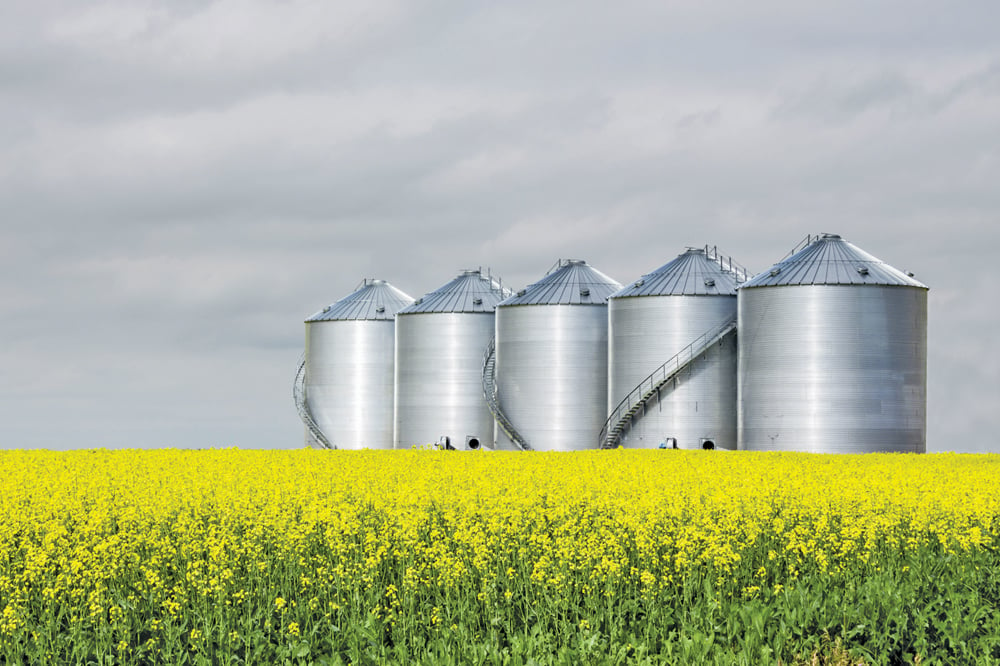The Canola Council of Canada says advice to lengthen rotations will not change its 2025 yield goals of 52 bushels an acre for a total 26 million tonnes.
Typical wheat-canola rotation has fallen out of favour with agronomy experts, who argue that longer rotations are needed to manage disease such as blackleg, verticillium wilt or clubroot.
Curtis Rempel, Canola Council of Canada vice-president of crop production and innovation, said the goals are demand driven, based on market projections.
“I don’t think there’s much reason when we’re looking at the landscape right now to really change that demand number, so then the question is, can we supply that demand? When we factored in our analysis, we knew that the number has to come from increasing yield per acre,” he said.
Read Also

Cereal cover crops show mixed flea beetle protection for canola
University of Manitoba researchers are testing if planting fall rye and oat nurse crops help growers reduce damage without hurting yield.
“From our perspective, it’s increasing yield per acre, increasing profitability, increasing sustainability and reducing production risk. It’s not yield at all costs.”
- Read more: What’s your canola-seeding rate?
- Read more: How early is too early to seed canola?
Longer
Anastasia Kubinec, acting manager of crop industry development with Manitoba Agriculture, is among those advising longer rotations. Manitoba producers took off 40.3 bushels per acre on average in 2015, according to data from the Manitoba Agricultural Services Corporation (MASC), but Kubinec says pockets of producers have hit a yield ceiling due to blackleg and are no longer seeing the increases they previously enjoyed with new varieties.
“Farmers have seen that they’ve had reduced canola yields or they’re seeing higher disease pressures or disease pressures regardless of the tools that they’re using,” she said. “They’re not able to just kind of deal with it the way that they used to be able to deal with some of those disease issues, but they are finding if they throw in another crop and have a bit longer crop rotation, then they are getting a handle on the disease.”
According to the 2016 Manitoba Canola Disease Survey, blackleg was the second most common canola ailment and was present in 80 per cent of tested fields with a severity ranging between 1.5 and 1.6 out of five.
Blackleg has been noted in resistant crops in recent years, something Kubinec has also tied partially to tight rotations.
“Resistance for blackleg isn’t immunity; it’s resistance. It can be broken,” she said. “What we have been finding is what resistance is available in the varieties and what the actual races or pathotypes are in the field aren’t always necessarily matching up.”
It is Kubinec’s view, however, that yields may still meet the Canola Council of Canada’s goals even with more acres tied up in longer rotations. Canola may be added into rotations with other crops that are also looking for longer rotations, she said, while longer rotations may bolster yield during years when canola is grown.
Roadblocks
Rotation was considered in the Canola Council of Canada’s road map to 2025, Rempel said. The council recommends at least one year between canola crops, with two or three years preferred.
Kubinec acknowledged that lengthening rotations may be problematic depending on crops added, whether the producer has the knowledge and equipment needed to produce the new crop, and proximity to the new market.
Longer rotations are also unlikely to affect sclerotinia, as spores may remain active in the soil for seven years or more. Additionally, Kubinec pointed out, other crops in the rotation may be equally vulnerable to the disease.
Last year’s Manitoba Canola Disease Survey showed sclerotinia was present in well over 90 per cent of the 105 fields tested with a record severity rating of 3.2 out of four.
Road map to 2025
The “52 by 2025” strategy expects to add eight bushels an acre of yield due to genetic improvements, three additional bushels from improving seeding practices, another three from fertility management, and two additional bushels per acre from both integrated pest management and harvest management.
Straight cutting, harvest timing, pest control thresholds, encouraging beneficial insects and 4R nutrient management (right source applied at the right rate at the right time and in the right place) are among the practices advocated by the canola council.
“We’re really working at biodiversity and what is the dollar value of conserving wetlands and headlands and those sorts of things in terms of building up beneficial insects,” Rempel said.
Chuck Fossay, chair of the Manitoba Canola Growers, says yields in Manitoba are already meeting or on track for 52 bushels an acre in some areas and may increase as producers weed out lesser performing varieties.
“It doesn’t require more acres,” he said. “It’s basically saying that through good management, whether it’s better fertilizer, better harvesting techniques and also new varieties, that we should be able to increase the production without bringing more land seeded to canola.”
The canola council has pointed to yield variability across the Prairies to justify the goals.
Most canola acres in Manitoba reported “moderately high” yield variability, according to the council, with pockets of “high” or “very-high” variability near Dauphin and southeast Manitoba.
Gregory Sekulic, sustainability specialist with the Canola Council of Canada, pointed to breeding advancements, which he says will bring increased ability for plants to absorb environmental stress.
“What we’re really seeing is increases in yield potential, absolutely, but also huge increases in how these cultivars and varieties deal with weather-related stress and weather- and insect-related stress as well. So I think more what we would be looking at in the variability across the Prairies is more of an increase in consistency than an equalization of yield across the Prairies,” he said.
Over 3.1 million acres of canola were grown in Manitoba in 2016, down 1.6 per cent from the previous year, with an average yield of 39 bushels per acre, according to Statistics Canada.
















